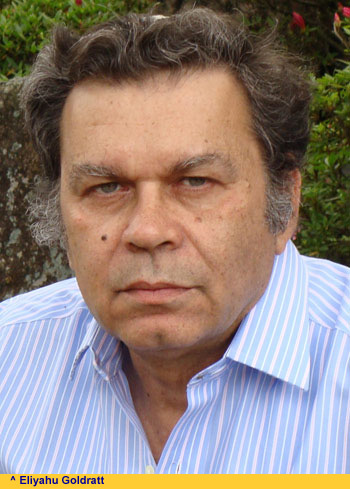Critical chain project management (CCPM)
Critical Chain Project Management (CCPM) is a method of planning, executing and managing projects that are using the uncertainty as a possibility rather than as a threat. The methodology was developed by Dr. Eliyahu M. Goldratt in 1997. Goldratt´s Theory of Constraints (TOC), and the following book called "Critical chain", was the root for this method. This theory consists of a collection of methods and algorithms to describe supply chain management. An objection is to streamline the transfer of ingredients from the factory all the way through the distribution chain where that particular product is put onto market. The reason why Goldratt came up with this method was because projects often got delayed, there were increases in costs during the project and the deliverables were often less than first promised. Normal process of project planning, with a project team, what tasks to be accomplished, and what sequence, must be defined before the method becomes useful. The main principle with the CCPM is to strip off the risk of starting the project late or finish it early, and instead put some extra time into a buffer.
History/background

Eliyahu M. Goldratt was born in Israel in 1947, and died in 2011. During his life he worked as an educator, author, scientist, philosopher and business leader. He completed his Bachelor of Science degree from Tel Aviv University, and the Master of Science from Bar-Ilan University. Further he obtained a Doctorate in Philosophy, also at Bar-Ilan University. Besides developing several business management methods, he also held patent in various areas, i.e. medicine and mechanics. Goldratt is said to be a thinker who motivated others to think. He encouraged his listeners to consider their business practices again with a fresh, new vision. (https://www.toc-goldratt.com/en/biography-of-eli-goldratt)
In Eliyahu M. Goldratt´s first book, called “The Goal (1984)”, he writes about a manager that has problems regarding his manufacturing plant. Goldratt argues that elements of an organization and their interdependencies can predict if the organization will do what should be done. As a result, the number of opportunities will increase when the number of interdependencies increases. A constraint is something that plays a part of a physical, social or financial restriction. Goldratt defines the elements controlling the performance of the system as constraints. When you have a restriction, and want to improve the performance of the system, it is required to follow the rule “more is better”. This means that the total input will be higher if the production rate of the constraint element increases. On the other hand, if you have a non-constraint element and want to improve the performance of a system, the rule will be “more is worse”. The lead times will increase when working at full capacity because the recourse will give excess inventory so that the constraint resource will be choked. (http://www.wseas.us/e-library/conferences/2011/Barcelona/MEQAPS/MEQAPS-45.pdf)
Goldratt describes three measurements that can control the manufacturing plant; 1) throughput, 2) investment and 3) operating expense. The money generated from sales is called “throughput”, this means the value of sales minus TVC (Truly Variable Cost). TVC is the cost of making and selling additional units. The money tied up in the system is called “investment”. And the name given to the rest of the money, except TVC, which incurred to turn investment into sales, is called “operating expense”. This includes wages etc. Goldratt claims that decisions can be made by evaluating the effect from these three measurement, in the written order. (http://goldratt.co.uk/resources/throughput_accounting/index.html)
He introduces the Drum-Buffer-Rope (DBR) method, that is about producing only what is needed, and to avoid overproduction. This methodology is called OPT, Optimized Production Technology. In Goldratt´s second book, called “It´s not Luck (1994)”, concept form Market and Logistics are included in the OPT. This has become the Theory of Constraints (TOC). The third book, “Critical chain (1997)”, demonstrates the implementation of TOC to Project Management. (http://www.wseas.us/e-library/conferences/2011/Barcelona/MEQAPS/MEQAPS-45.pdf)